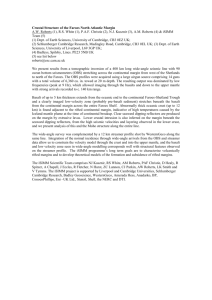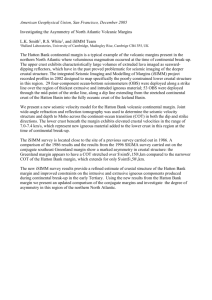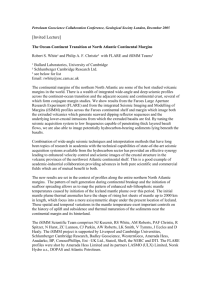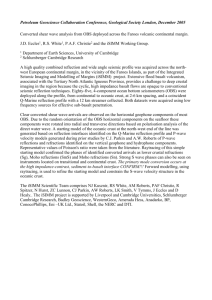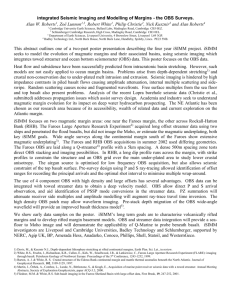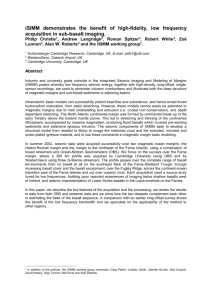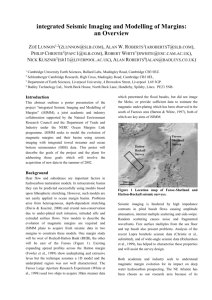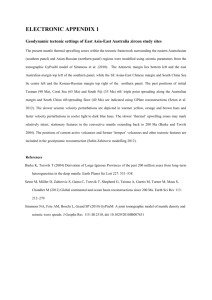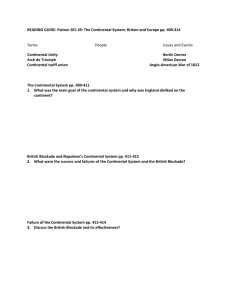iSIMM_AGU2002 - Badley Earth Sciences
advertisement
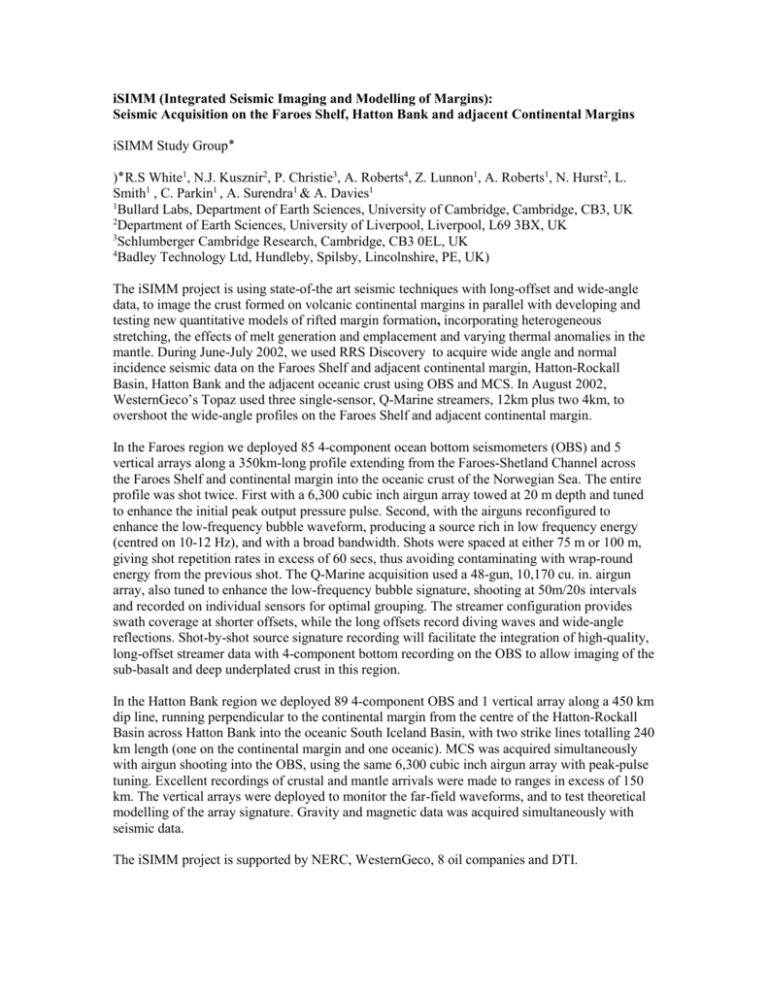
iSIMM (Integrated Seismic Imaging and Modelling of Margins): Seismic Acquisition on the Faroes Shelf, Hatton Bank and adjacent Continental Margins iSIMM Study Group٭ (٭R.S White1, N.J. Kusznir2, P. Christie3, A. Roberts4, Z. Lunnon1, A. Roberts1, N. Hurst2, L. Smith1 , C. Parkin1 , A. Surendra1 & A. Davies1 1 Bullard Labs, Department of Earth Sciences, University of Cambridge, Cambridge, CB3, UK 2 Department of Earth Sciences, University of Liverpool, Liverpool, L69 3BX, UK 3 Schlumberger Cambridge Research, Cambridge, CB3 0EL, UK 4 Badley Technology Ltd, Hundleby, Spilsby, Lincolnshire, PE, UK) The iSIMM project is using state-of-the art seismic techniques with long-offset and wide-angle data, to image the crust formed on volcanic continental margins in parallel with developing and testing new quantitative models of rifted margin formation, incorporating heterogeneous stretching, the effects of melt generation and emplacement and varying thermal anomalies in the mantle. During June-July 2002, we used RRS Discovery to acquire wide angle and normal incidence seismic data on the Faroes Shelf and adjacent continental margin, Hatton-Rockall Basin, Hatton Bank and the adjacent oceanic crust using OBS and MCS. In August 2002, WesternGeco’s Topaz used three single-sensor, Q-Marine streamers, 12km plus two 4km, to overshoot the wide-angle profiles on the Faroes Shelf and adjacent continental margin. In the Faroes region we deployed 85 4-component ocean bottom seismometers (OBS) and 5 vertical arrays along a 350km-long profile extending from the Faroes-Shetland Channel across the Faroes Shelf and continental margin into the oceanic crust of the Norwegian Sea. The entire profile was shot twice. First with a 6,300 cubic inch airgun array towed at 20 m depth and tuned to enhance the initial peak output pressure pulse. Second, with the airguns reconfigured to enhance the low-frequency bubble waveform, producing a source rich in low frequency energy (centred on 10-12 Hz), and with a broad bandwidth. Shots were spaced at either 75 m or 100 m, giving shot repetition rates in excess of 60 secs, thus avoiding contaminating with wrap-round energy from the previous shot. The Q-Marine acquisition used a 48-gun, 10,170 cu. in. airgun array, also tuned to enhance the low-frequency bubble signature, shooting at 50m/20s intervals and recorded on individual sensors for optimal grouping. The streamer configuration provides swath coverage at shorter offsets, while the long offsets record diving waves and wide-angle reflections. Shot-by-shot source signature recording will facilitate the integration of high-quality, long-offset streamer data with 4-component bottom recording on the OBS to allow imaging of the sub-basalt and deep underplated crust in this region. In the Hatton Bank region we deployed 89 4-component OBS and 1 vertical array along a 450 km dip line, running perpendicular to the continental margin from the centre of the Hatton-Rockall Basin across Hatton Bank into the oceanic South Iceland Basin, with two strike lines totalling 240 km length (one on the continental margin and one oceanic). MCS was acquired simultaneously with airgun shooting into the OBS, using the same 6,300 cubic inch airgun array with peak-pulse tuning. Excellent recordings of crustal and mantle arrivals were made to ranges in excess of 150 km. The vertical arrays were deployed to monitor the far-field waveforms, and to test theoretical modelling of the array signature. Gravity and magnetic data was acquired simultaneously with seismic data. The iSIMM project is supported by NERC, WesternGeco, 8 oil companies and DTI.
